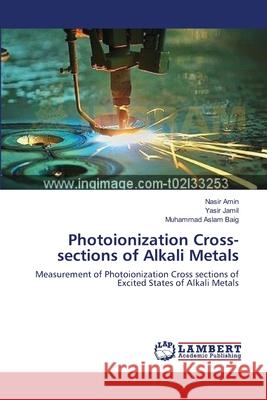Photoionization Cross-sections of Alkali Metals » książka
Photoionization Cross-sections of Alkali Metals
ISBN-13: 9783659552083 / Angielski / Miękka / 2014 / 96 str.
Laser photoionization spectroscopy is based on the resonance ionization of atoms and molecules as a result of successive absorption of several laser photons. Photoionization cross sections have number of utilities in the applied areas of science and technology such as space and astrophysics, radiation protections, laser designing and interaction of electromagnetic radiation with matter. The atoms whose ionization potentials are much higher can be ionized by two-photon and multi-step excitation. The absolute photoionization cross sections of the excited states of lithium, sodium and potassium were measured using the saturation technique in conjunction with a thermionic diode ion detector at different ionizing wavelengths above the first ionization threshold. In general it has been found that the measured values of cross sections from the first resonance states to the ionization threshold decreases with the increase of atomic number (Li > Na > K). The smooth frequency dependence of the cross section is observed above the ionization threshold for the excited states of alkali metals.
Laser photoionization spectroscopy is based on the resonance ionization of atoms and molecules as a result of successive absorption of several laser photons. Photoionization cross sections have number of utilities in the applied areas of science and technology such as space and astrophysics, radiation protections, laser designing and interaction of electromagnetic radiation with matter. The atoms whose ionization potentials are much higher can be ionized by two-photon and multi-step excitation. The absolute photoionization cross sections of the excited states of lithium, sodium and potassium were measured using the saturation technique in conjunction with a thermionic diode ion detector at different ionizing wavelengths above the first ionization threshold. In general it has been found that the measured values of cross sections from the first resonance states to the ionization threshold decreases with the increase of atomic number (Li > Na > K). The smooth frequency dependence of the cross section is observed above the ionization threshold for the excited states of alkali metals.











